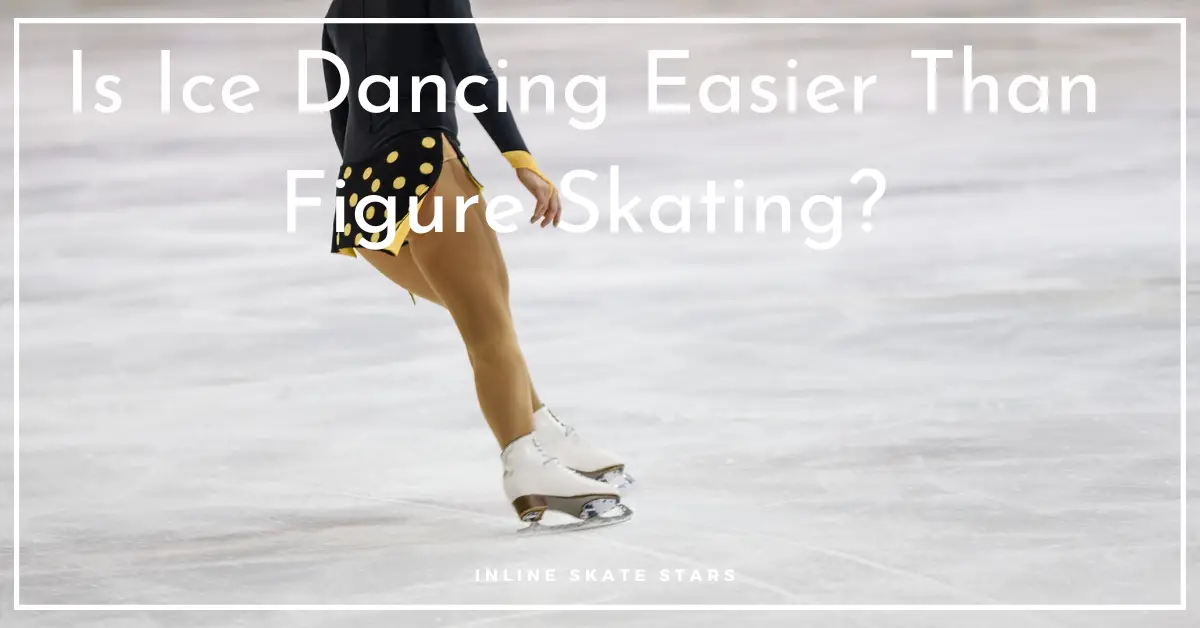Figure skating is a fantastic winter sport many people enjoy recreationally and competitively.
It is the most followed Winter Olympic Sport among fans in the United States as of December 2021.
At the Olympics, figure skating is a bracket term with four competition categories – the men’s singles, the women’s singles, pair skating, and ice dancing.
Pair skating is essentially men’s and women’s event elements performed by a pair team. There are also juniors’ versions of these competitions.
While the singles are easy to point out (men’s and ladies’ singles), differentiating between pair skating and ice dancing can be dodgy.
Read on to learn more.
Is Ice Dancing Easier Than Figure Skating?
Is ice dancing easier than figure skating? Ice dancing is easier than figure skating because some elements of figure skating are challenging to perform.
Figure skaters are also more prone to injuries while performing gymnastics.
Pair Skating vs. Ice Dance
There are two couples’ events in figure skating at the Olympics, both of which feature a man and a woman skating together on the ice to music – pair skating and ice dancing.
Each season, the International Skating Union (ISU) gives the required elements for each category.
Below is what each entails.
Pair Skating
Fondly referred to as gymnastics on ice, pair skating is a physically demanding winter sport.
It demands balance, flexibility, coordination, and strength, especially for the man lifting his partner.
The main elements of pairs skating are:
- Twist lifts: The man lifts the woman over his head and throws her into the air. The woman uses the throw momentum to complete up to three rotations before his male counterpart catches her at the waist and assists her in landing on a backward-outside edge on one foot.
- Throw jumps: Partner-assisted jumps in which the man throws the woman into the air on the take-off. The woman then lands without assistance from her partner on a backward-outside edge.
- Death spirals: The man pivots with one toe anchored into the ice. He then takes the woman’s outstretched hand and anchors her almost parallel to the ice. The woman then spins around her partner with only one foot allowed to touch the ground. She must not touch the ice with her head or assist herself with her free hand or other body parts.
Some figure skating elements, like the triple axle, are hard to nail.
Furthermore, the gymnastic moves make it vulnerable to injuries, especially among female pair skaters who are at the center of the acrobatics.
Ice Dance
Ice dance stems from ballroom dancing and has a ballroom-on-ice feel.
The dance should reflect nuances of the chosen dance music, demonstrate the harmony between partners, and show distinct changes of mood and pace with variations in the speed and tempo of the music.
There are minimal jumps performed gracefully for extra flair. However, there are no overhead lifts like in pair skating.
Instead, ice dancing lifts are more about creating interesting shapes and balance between the partners’ weights.
Partners are almost always physically connected. They skate close to each other, usually in some dance hold moves.
They must remain within two arms’ length when they separate for a footwork sequence.
The required elements may include:
- Dance lifts: The man lifts the woman but is not allowed to do overhead lifts. Lifts should enhance the music chosen and express its temperament. The lifts should be performed elegantly without obvious feats of strength and awkward or undignified actions and poses.
- Dance spins: The couple performs a spin together on the spot around a common axis on one foot. However, they are allowed to change their foot during the spin.
- Step sequences: A series of prescribed or un-prescribed steps, turns, and movements in a rhythm dance or a free dance. They include step sequences in the hold position and not touching step sequences.
- Pattern dance element: This is the design of the dance on the ice. The ISU specifies the diagram of the pattern dance, which includes all the information needed to execute a complete pattern dance.
- Choreographic elements: These are listed or unlisted movements or series of movements specified by the Ice Dance Technical Committee. Performers must execute these elements graciously to produce the feeling of a unified dance.
From above, it’s clear ice dance focuses on graceful dance moves rather than acrobatics, as in pairs skating. Precision in performance is the goal.
Ice dance is, therefore, safer than pair skating. However, the dance moves need a lot of practice to master.
Is Ice Dancing Easier Than Figure Skating? FAQs
Is ice skating harder than dancing?
Ice skating is certainly harder than dancing since an ice skater has to learn to balance and operate ice skates. The learning curve is relatively steep since one needs at least four weeks to learn and master the basics.
What is the easiest move in ice skating?
There is no one easy move in ice skating – it takes a lot of practice and coordination to be able to skate well. However, some people may find basic figure skating moves (such as jumps) easier because they require less finesse.
Is figure skating more difficult than ice dancing?
It depends on the skater’s experience and skill level. Overall, ice dancing may be more difficult than figure skating for some people due to the higher level of precision and coordination required, but for others, it may be easier because there are fewer tricky movements involved.
Why don’t Americans like ice dance?
It may be due to a lack of exposure or simply because some people find it more difficult than figure skating. It’s definitely worth trying out ice dance if you’re interested in the sport!
Why do ice dancers have to start skating so early?
It may be due to the fact that ice skating skills need to be perfected before skaters can even attempt figure skating moves. Some people argue that it’s unfair for some skaters who start younger to have an advantage over those who start later, but overall ice dancers have had a long history of success so there must be something special about their training methods!
Why is ice dancing more difficult than figure skating?
It depends on the skater’s experience and skill level. Overall, ice dancing may be more difficult than figure skating for some people due to the higher level of precision and coordination required, but for others, it may be easier because there are fewer tricky movements involved.
What is the difference between an adult and a child’s class in ice dancing?
It may depend on the ice skating center that you visit. In general, an adult class will be more difficult than a child’s class, but there is no set rule so it really depends on the instructor and skaters’ abilities.
Which one is better: toe looping or camel spins?
Some skaters prefer toe looping because it’s a more technical move, while others might prefer camel spins because they look cooler! Ultimately, the best way to find out what moves you like and don’t like is to try different ones out!
How do I get started ice dancing?
It really depends on your skating level and experience. Some ice dancing beginners might start by taking a beginner class, while other skaters may prefer to try out ice dancing moves before joining a club or lessons. Ultimately, the best way to find out if ice dancing is for you is to give it a try!
What’s the difference between single and double jumps in ice dancing?
Double jumps are a more advanced move that skaters might use in dance routines or at competitions, while single jumps are typically used for ice dancing figure eights or simple free skating moves.




